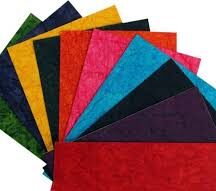Hi friends, today I will talk about paper made by hands
This paper is very beautiful and very strong. We can make wedding cards, carry bags, gift envelopes, files, and other things from this paper.

Now let’s talk about how this happens
First of all we ask for raw cloth, then we clean it properly, after that we put it in a big machine and get it ground which we call beater to clean it.
To clean it we use water, bleach and chemicals and clean it well. After this we sell it in another machine with the help of which it comes out in a square shape.
After this, with the help of labour, this paper is given a coloured look. After being coloured, this paper is sent to dry in the sun. After drying, this paper is separated into good q uality.
uality.
Then the dried paper that comes has a pressing in it which we call glaze. After the glaze is done it is sent for cutting.
This paper which is damaged after cutting is counted and packed. When packed, there are 500 packs of paper in a bundle which we call a ream.
After this, the firm’s seal is put on the bundle and it is sent to different countries and states.
Now let’s talk about Kalpi where this paper is made
Kalpi is a very ancient city where Vedab Vyas ji was born, whom we know as Vedvyas Jan Bhumi And here is also Ravan’s Lanka, the only Lanka left in the Jogi world, in which Ravan, Kumbhakarna, Meghnad and Ravan’s entire army have been described in the form of a picture.
Apart from this, Rani Lakshmibai who had reached Kalpi while fighting from Jhansi, it is told that Rani Lakshmibai’s horse was last horsed from here, after this Rani Lakshmibai ji attained veergati.
Apart from this, there are many such stories of Kalpi, describing which I would get tired, you just
understand that Kalpi is a very historical and ancient city.
Kalpi is known for its handmade paper production, using a variety of raw materials and traditional techniques. The paper is made from materials like cotton, silk, and agricultural waste, including sugarcane, bark, jute, and waste paper. The process involves using a mold and deckle to form the paper, with the inherent bonding properties of the cellulose fibers creating a strong, textured sheet.
- Raw Materials:
A diverse range of materials are used, including paddy and wheat straw, jute, rags, cotton rags, hosiery cuttings, cotton linter, tailor cuttings, fibers, bagasse, cotton stalks, grasses, and waste paper.
- Traditional Techniques:
The craft involves using a mold and deckle, a frame with a screen covering it, to form the paper sheet.
- Distinct Features:
Handmade paper is thicker than machine-made paper and may have rough, deckled edges, creating a unique texture.
- Wide Range of Uses:
Handmade paper is suitable for various applications, including writing, printing, art projects, and even as a filter paper for scientific purposes.
- Eco-Friendly:
Handmade paper is a wood-free and eco-friendly option, offering a sustainable alternative to traditional paper production.
- Geographical Indication:
The craft of handmade paper in Kalpi has been granted a Geographical Indication (GI) tag, recognizing its unique heritage and preserving the traditional practice.
- Artistic Expression:
Skilled artisans use handmade paper to create intricate art pieces, using techniques like embossing, painting, and printing.
- Cultural Significance:Kalpi’s handmade paper industry has a long history, playing a significant role in the local economy and culture.